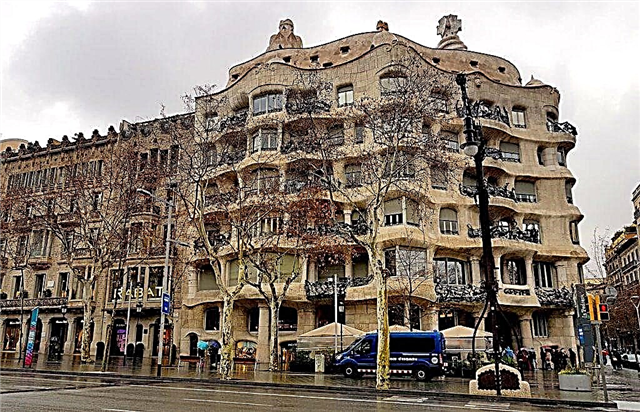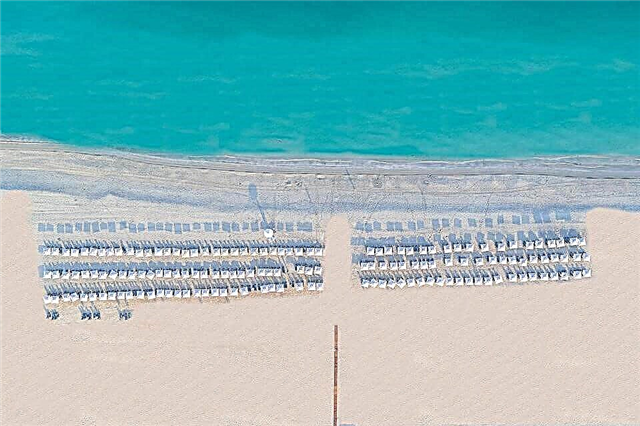Address: Moscow, st. Prechistenka, 12/2
Foundation date: 1957 year
Opening date: June 6, 1961
Founder: Alexander Zinovievich Crane
Coordinates: 55 ° 44'36.8 "N 37 ° 35'51.6" E
Content:
Pushkin always stays with us. His name is as eternal as the famous poems. A museum dedicated to the poet's work appeared in the city in 1961. Over the years, it has become one of the most famous museums in Moscow. Museum expositions are located in the center of the Russian capital in a perfectly preserved manor house of the Khrushchev-Seleznev nobles.

The estate of the Khrushchevs-Seleznevs, which houses the State Museum of A. Pushkin
How the museum was created
The idea to create a new literary museum in Moscow appeared in the pre-war period. The capital has repeatedly hosted exhibitions dedicated to the poet.
The initiator of the creation of the first expositions was Alexander Zinovievich Kerin, a museum historian who devoted more than 40 years of his life to perpetuating the memory of Pushkin. It was he who laid the main principle of the Pushkin Museum: his collections are based solely on gifts.
The decree on the creation of the museum was adopted in 1957. The collection of memorial and historical relics and the decoration of the halls took several years. Finally, in the early summer of 1961, new exhibitions were opened to the public.

Monument to A.S. Pushkin
Museum today
Today, thousands of unique items are carefully kept in museum funds - old glass and porcelain dishes, paintings, drawings, lithographs, books, clothes and pieces of furniture, which were used in the first half of the 19th century. The halls display permanent exhibitions - "Pushkin and His Era" and "Pushkin's Tales". In addition, the mansion houses a spacious reading room, rooms for exhibitions, a concert hall and the office of the former director of the museum, A.Z. Kerin.
Memorial exposition - childhood and lyceum
The halls dedicated to the Pushkin era tell about all stages of the poet's life, starting from his birth. The first collection that tourists get to know is called "Prologue". It features engravings by Russian and foreign artists of the 18th century. Here you can also see books written by great Russian writers and poets - M.V. Lomonosov, D.I.Fonvizin, A.P. Sumarokov, G.R.Derzhavin and N.M. Karamzin.

Hall No. 7. Ballroom
Hall No. 2 covers the chain of events that took place at the beginning of the 19th century. It exhibits monuments of the Russian-French war of 1812 and documents about the uprising and the fate of the Decembrists. A separate place is occupied by books and autographs of the young poet's comrades.
Music of that time plays in the hall and you can see a sculptural portrait of A.S. Pushkin, the author of which is the talented Russian sculptor Alexander Ivanovich Terebenev. His Atlantes in the New Hermitage are known to many, but not everyone knows about the expressive statue of the poet with crossed arms. Nearby is a portrait of the poet, which was lithographed by the artist Gustav Adolfovich Gippius. And underneath is perhaps the most valuable museum object of the museum - an original Pushkin's autograph.
As many as three halls are occupied by an exposition dedicated to the Moscow childhood of Pushkin. The atmosphere of the house where he spent his childhood was recreated in detail. Exhibited are views of the city of that era and various things used by members of the Pushkin family. In particular, books published at the beginning of the 19th century, carved furniture and fine porcelain dishes. On the walls there are portraits of the poet's father and mother.

Hall number 9. Small hall. Pushkin's return to Moscow
The "Ballroom" of the old manor house tells about the time of Pushkin's studies at Tsarskoye Selei, the period of his life in the city on the Neva from 1817 to 1820. It also contains materials about two links - to Yuzhnoye and Mikhailovskoye.
Literary creativity
Hall No. 8, or "Big Drawing Room", is dedicated to the history of the creation of "Eugene Onegin". The poet wrote the famous poetic novel, being convinced of the fatality of existence and the predetermination of being. Whatever you do - everything will come to the same ending ... He composed his work in different places for several years. The museum contains testimonies of Pushkin's contemporaries and priceless handwritten pages of the novel.
Moving to the next hall, tourists can see exhibits related to the poet's return to Moscow society and the years spent on wanderings. These are the poet's trips to Azrum, Tver province and life in B.Boldino.

Hall No. 10. Bosketnaya. The Queen of Spades
The "bosquette" of the manor house is usually called the "Queen of Spades" hall. Known to everyone from his school years, the poet composed a story in verse in 1833, when he lived in Boldino. One half of the exhibition is dedicated to the Countess and represents the wealthy aristocracy of the Russian Empire of Catherine's times. The other half tells about Herman - a new hero who was put forward by the poet's bourgeois circle.
The next three halls present to the museum visitors Pushkin's poem "The Bronze Horseman" and the poet's journey through the places of the Pugachev uprising. During a trip in 1833, he visited the Volga region, Kazan, Orenburg and Simbirsk. On the walls there are paintings by artists - descendants of the poet. And next to them are picturesque portraits of Pugachev, which were painted in the last half of the 18th - early 19th century.
Room 14 reveals the fate of the historical novel "The Captain's Daughter" - Pushkin's main work of the mid-1830s. The items displayed here reflect the world of peasants and commoners who became free and unwitting participants in the bloody Pugachev uprising.

Hall number 8. Large living room. "Eugene Onegin"
Farewell to the poet
In hall 15 you can get acquainted with the final years of the poet's life. Within its walls are exhibited Pushkin's manuscripts, books, personal belongings and documents of recent years. There are portraits of people from the inner circle, handwritten copies of the last poems and a tragic death mask.
The majestic "Avanzal" completes the tour of the Pushkin era and is dedicated to the memory of the early deceased poet. There is a beautiful grandfather clock made in the 19th century, and next to it there is a copy of the monument to the poet by Alexander Mikhailovich Opekushin.
Fairy world
Another permanent exhibition is called Pushkin's Tales. It is quite small and occupies only two rooms on the first floor. There are excursions for preschoolers and elementary school students, and parents with children are happy to come here.

Hall No. 11. "The Bronze Horseman"
The first room contains tools, objects of peasant rounds and old paintings. Here you can also see illustrations for Pushkin's fairy tales, made by famous Russian artists - Vladimir Mikhailovich Konashevich, Vladimir Alekseevich Milashevsky and Tatyana Alekseevna Mavrina. Another room presents the magical "Buyan Island" - a fairytale world intended for children to play.
About the branches of the museum
Pushkin is the true history of our country, therefore in Moscow they try to carefully preserve all the places associated with the poet and his closest relatives. The exhibition halls and memorial apartment located on Old Arbat have the status of a branch of the literary museum.
Between the metro stations Krasnye Vorota and Baumanskaya, on Staraya Basmannaya street, there is an old wooden mansion. It houses a house-museum telling about the poet's uncle, V.L. Pushkin. In addition, the house-museum of the famous Russian writer Ivan Turgenev and the memorial apartment of the symbolist poet Andrei Bely are considered branches.

Hall number 2. The era of Pushkin
Useful information for visitors
The doors of the main building of the museum are open to guests on all days, except Monday, from 10:00 to 18:00. On Thursdays, expositions open at 12:00 and end reception at 21:00. The entrance to the museum costs 200 rubles (2018). Children under 7 years old are admitted free of charge.Tourists need to keep in mind that ticket offices stop selling tickets half an hour before closing.
You can walk through the museum halls on your own or with an experienced guide. Museum staff conduct survey and thematic excursions dedicated to the poet's literary work and the Moscow period of his life.
Preschoolers can take part in game tours and classes based on Pushkin's fairy tales. For schoolchildren, the museum conducts literature lessons and thematic tours of selected novels and novellas. Adult visitors take part in walking tours of the historical sites of the capital and the architecture of Moscow in the first half of the 19th century.

Clavichord in one of the halls dedicated to Pushkin's childhood in Moscow
How to get there
The museum building is located at 12/2 Prechistenka Street, in the central part of the city. It is easy to walk to it in five minutes from the Kropotkinskaya metro station.











